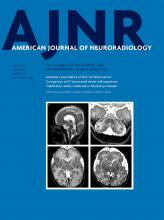Abstract
BACKGROUND AND PURPOSE: Cavitary plaques have been reported as a manifestation of otospongiosis. They have been related to third window manifestations, complications during cochlear implantation, and sensorineural hearing loss. However, their etiology and clinical implications are not entirely understood. Our purpose was to determine the prevalence, imaging findings, and clinical implications of cavitary plaques in otospongiosis.
MATERIALS AND METHODS: We identified patients with otospongiosis at a tertiary care academic medical center from January 2012 to April 2017. Cross-sectional CT images and clinical records of 47 patients (89 temporal bones) were evaluated for the presence, location, and imaging features of cavitary and noncavitary otospongiotic plaques, as well as clinical symptoms and complications in those who underwent cochlear implantation.
RESULTS: Noncavitary otospongiotic plaques were present in 86 (97%) temporal bones and cavitary plaques in 30 (35%). Cavitary plaques predominated with increasing age (mean age, 59 years; P = .058), mostly involving the anteroinferior wall of the internal auditory canal (P = .003), and their presence was not associated with a higher grade of otospongiosis by imaging (P = .664) or with a specific type of hearing loss (P = .365). No patients with cavitary plaques had third window manifestations, and those with a history of cochlear implantation (n = 6) did not have complications during the procedure.
CONCLUSIONS: Cavitary plaques occurred in one-third of patients with otospongiosis. Typically, they occurred in the anteroinferior wall of the internal auditory canal. There was no correlation with the degree of otospongiosis, type of hearing loss, or surgical complications. Cavitary plaques tended to present in older patients.
ABBREVIATION:
- IAC
- internal auditory canal
- © 2018 by American Journal of Neuroradiology
Indicates open access to non-subscribers at www.ajnr.org











